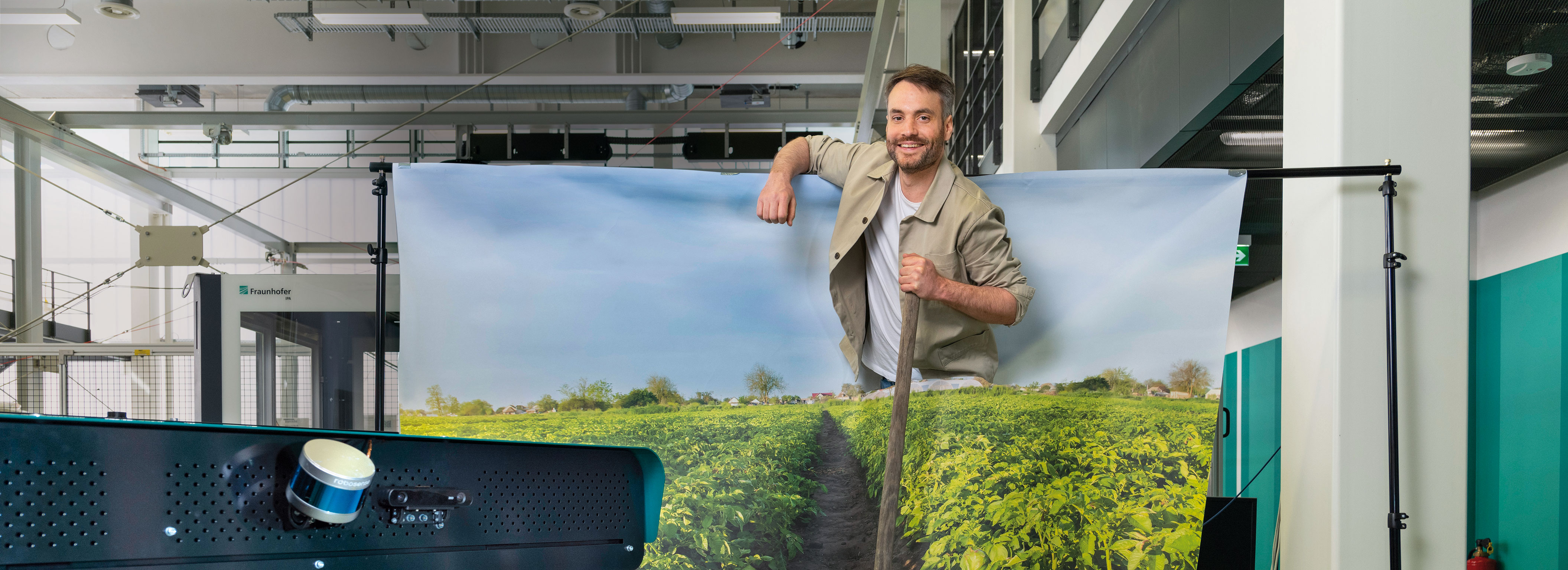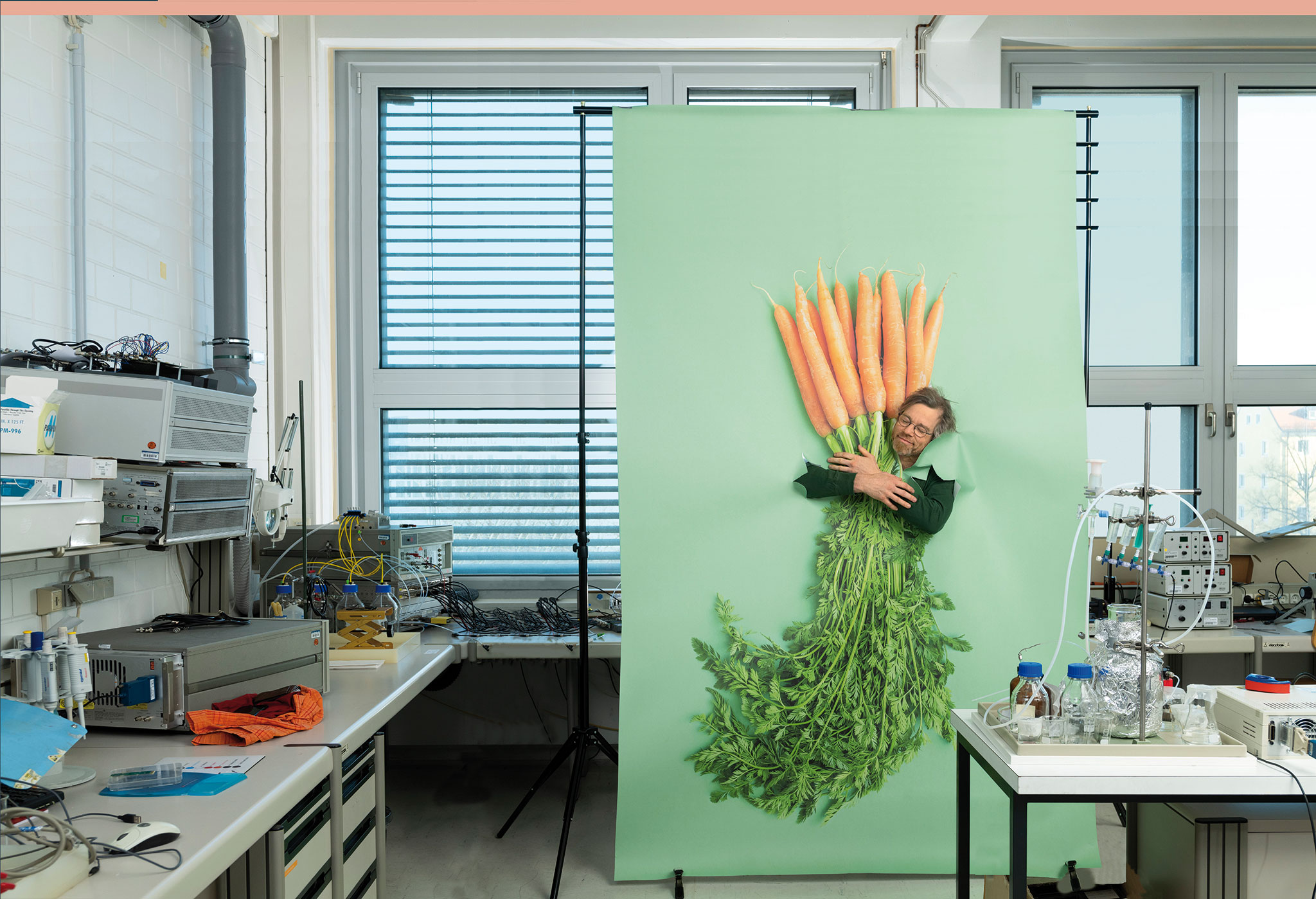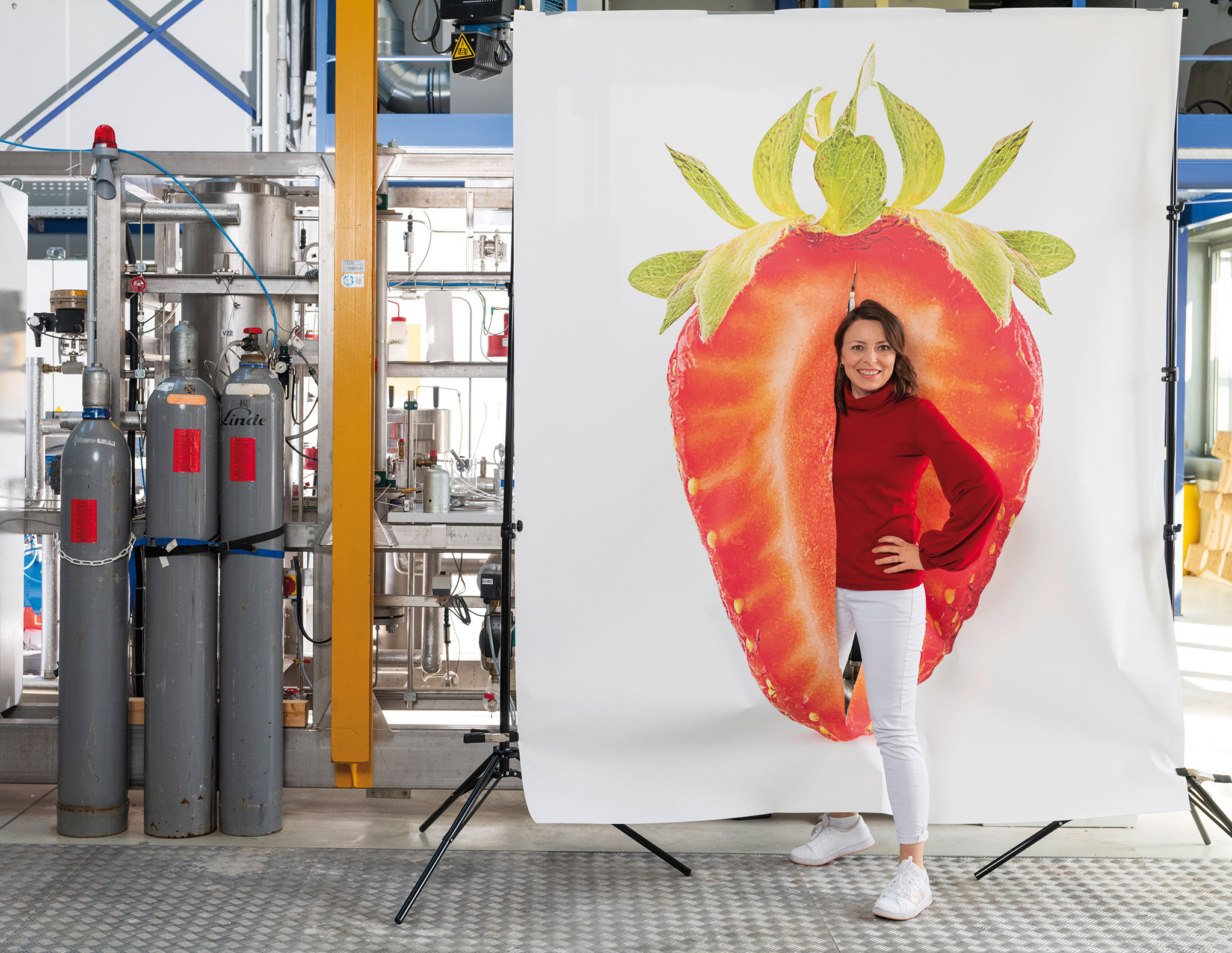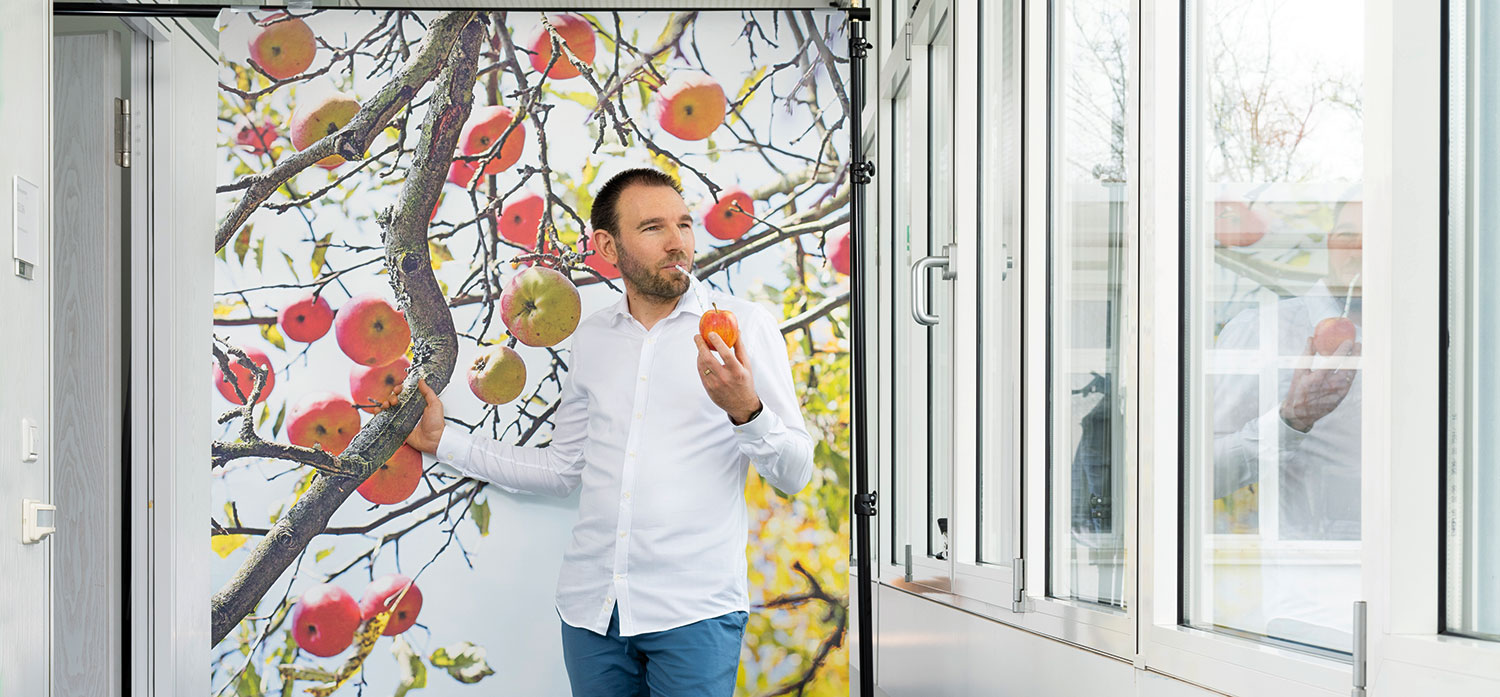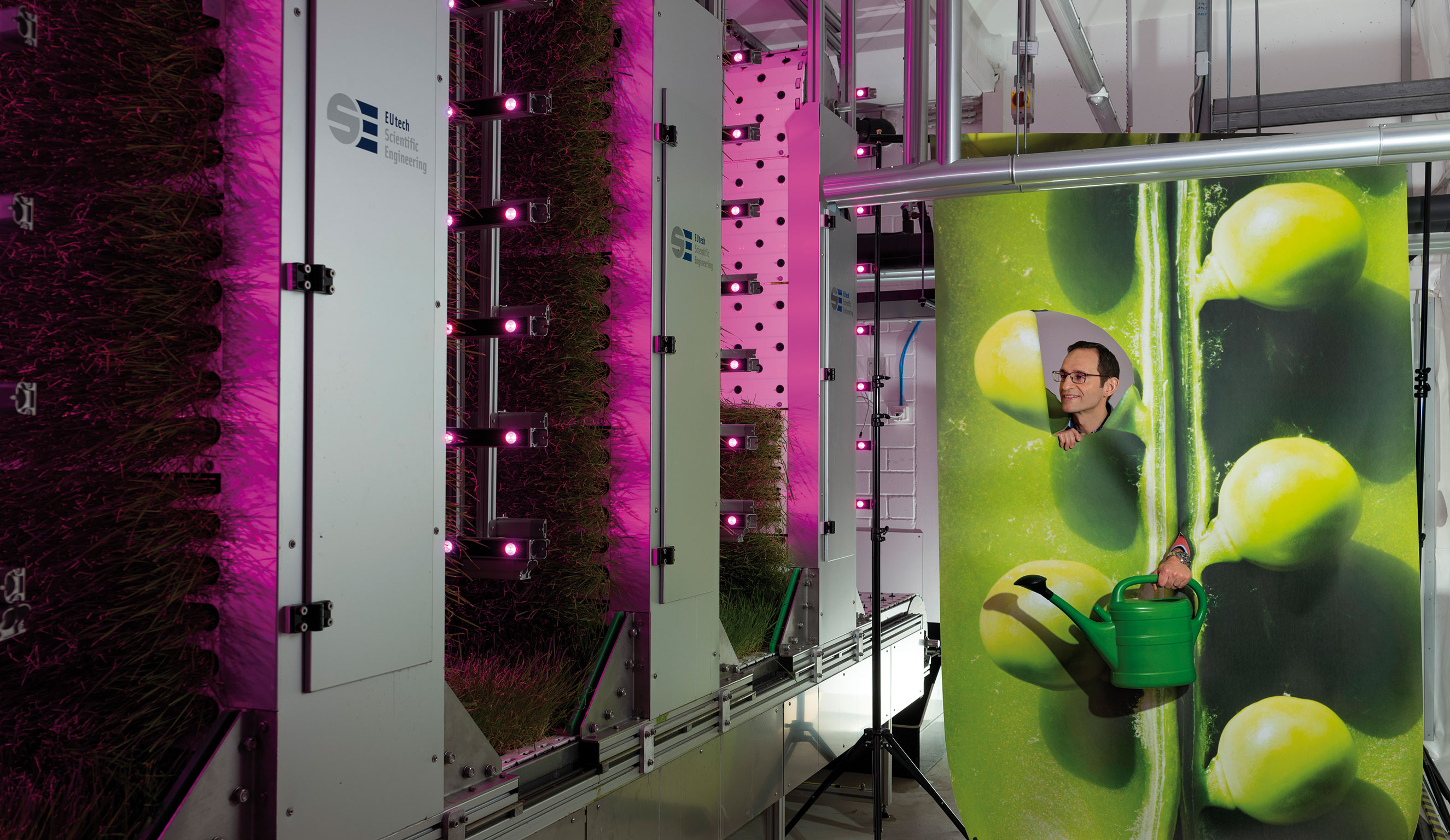Higher yields, lower losses
Web special Fraunhofer magazine 2.2023
When it comes to food, we are used to safety and
constant availability. But crises and empty shelves have
shown we can’t take that as a given. Fraunhofer
researchers are working to achieve greater resilience.
As CURT rumbles across the field, it looks like a table that has escaped from the kitchen. This outdoor robot consists of two robust wheels – which allow it to cross even the roughest terrain – and a platform just over a meter in height. The platform bristles with high-tech equipment, including a camera that keeps CURT on track, allowing it to roll along the furrows to the left and right of the young potato plants without destroying the delicate green shoots. Or at least only destroying some specific green shoots: weeds. And it might handle pests someday, too.
In today’s conventional agriculture, weeds are often removed using an herbicide called glyphosate. However, as this agent does not distinguish between different types of wild plants, it destroys them all, reducing biodiversity and intensifying the decline in insects. In the past 30 years, insect biomass has decreased by around 70 percent.
But now CURT is here. This agricultural robot was developed by Kevin Bregler, group manager at the Fraunhofer Institute for Manufacturing Engineering and Automation IPA as part of the Fraunhofer lighthouse project COGNAC, which involves seven Fraunhofer institutes. The CURT prototype is fully electric, and autonomously drives between rows of plants in potato fields. Fitted with laser scanners, a camera and a small GPS system, it finds its own way around the field and uses its manipulator to pull unwanted weeds out of the ground without damaging the little potato plants. “What’s special about CURT is that it is selective about which weeds it removes. This means it can leave nettles along the edge of the field while pulling up other weeds,” explains Mr. Bregler. The torn-up weeds are left lying in the field to become fertilizer. These developments are just the beginning: In the future, CURT will be put to work on permanent crops such as fruit, and there are already inquiries coming in from the coffee industry regarding use in coffee plantations.
